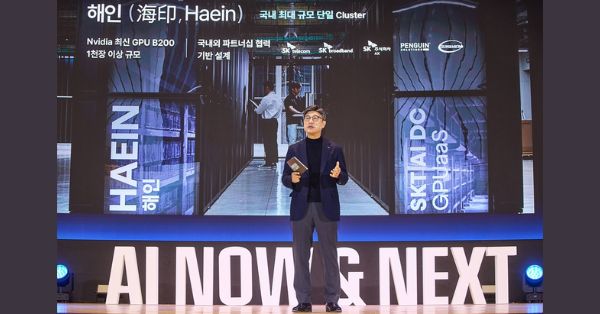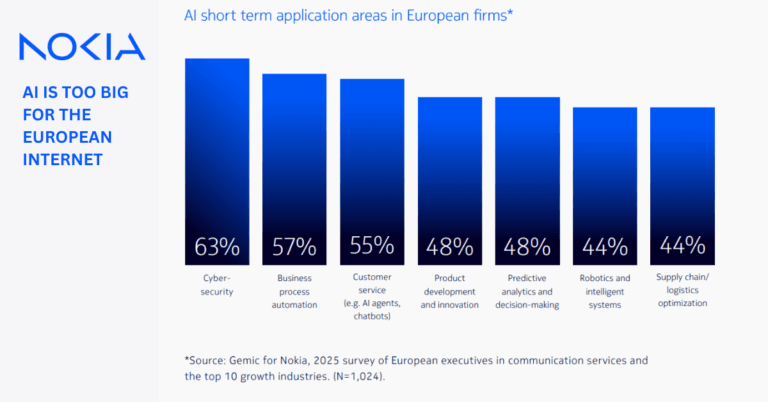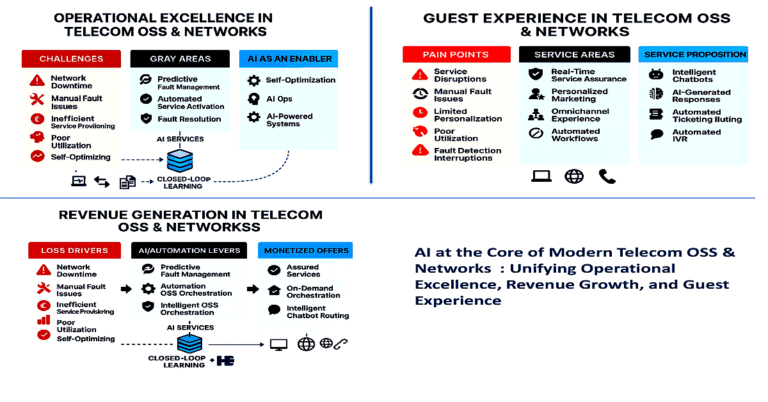SK Telecom AIDC expansion and Asia’s AI infrastructure race
SK Telecom is scaling from AI-enabled operator to full-stack AIDC developer, signaling a power-and-network-led approach to AI infrastructure in Korea and Southeast Asia.
SK Telecom AIDC expansion plans and partnerships
At SK AI Summit 2025, CEO Jung Jaihun outlined plans to expand the Ulsan artificial intelligence data center (AIDC) to 1GW-class capacity, stand up a nationwide trio of hubs (Gasan in the Seoul metro, Ulsan in the south, and a new southwest site), and take the model into Southeast Asia starting with Vietnam.
The operator is also deepening technology collaborations with Amazon Web Services (AWS) on Edge AI and with NVIDIA on AI-RAN and a Manufacturing AI Cloud; it intends to buy more than 2,000 NVIDIA RTX PRO 6000 Blackwell GPUs and scale Korea’s largest GPU cluster, Haein, as core compute for industrial AI workloads.
Beyond capacity, SK Telecom is formalizing a role as a comprehensive AIDC developer across design, build, and operations, and will commercialize a packaged solution spanning out‑rack facilities, clustering, in‑rack efficiency, and energy systems; the strategy aligns with government ambitions to elevate Korea into the Global Top 3 in AI and builds on MSIT’s selection of SKT for the Proprietary AI Foundation Model Project.
Why AI infrastructure needs power, cooling, and network proximity now
As AI training and inference move closer to users and machines, the bottlenecks are shifting from cloud regions to power, heat, and networks; telcos with power access, fiber, spectrum, and edge locations can compress the distance between chips, data, and devices while addressing latency, cost, and sovereignty demands.
1GW AIDC strategy: sovereign AI in Korea, expansion to Asia
The company is pairing scale with location and energy design to anchor sovereign AI capacity in Korea and export a repeatable blueprint into Asia.
Three-hub AI data center mesh in Korea: Gasan, Ulsan, southwest
Consolidating three hubs creates a resilient mesh for low-latency AI services across Korea while enabling workload placement by proximity to users, factories, and subsea cable landings; Ulsan’s expansion to gigawatt scale positions it as the flagship for training clusters, with Gasan and the southwest site balancing edge inference and regional resiliency.
LNG power and cold energy cooling to lower PUE and stabilize supply
Power is now the gating factor for AI, and SK Telecom is leaning on SK Group’s energy assets to secure capacity and reduce thermal overheads; in Vietnam, the plan couples an LNG power plant for grid stability with the use of LNG’s cold energy for efficient data center cooling, a path to lower PUE and improved economics where renewable supply is intermittent.
Carrier-led AIDC: impact on hyperscalers, enterprises, and public sector
For global cloud providers and AI platforms, a carrier-led AIDC network offers sovereign-region expansion without full greenfield builds; for Korean manufacturers, banks, and public sector agencies, it provides compliant, low-latency AI infrastructure that can sit near plants and metro cores while interworking with public cloud via hybrid architectures.
Network-native AI with AWS and NVIDIA: Edge AI and AI-RAN
SK Telecom is turning the network into an AI platform by fusing edge compute, transport, and radio intelligence with cloud ecosystems and GPU acceleration.
AWS–SK Telecom edge AI for low-latency, in-country workloads
The medium-to-long-term R&D pact blends SK Telecom’s domestic infrastructure and edge sites with AWS’s cloud tooling, targeting use cases that need millisecond latency, data locality, or deterministic performance; think on-device inference offload near base stations, content personalization at the metro edge, or privacy-sensitive analytics kept in-country while syncing to cloud.
AI-RAN to optimize RAN and enable reliable Physical AI
Embedding AI into the radio access network design aims to optimize scheduling, interference management, and energy consumption while exposing new real-time primitives for robots, vehicles, and industrial systems; the joint work with NVIDIA, government, and academia aligns with the industry’s shift toward AI-native RAN and could become foundational for reliable Physical AI services at scale.
Manufacturing AI Cloud with Blackwell GPUs for factory AI
The operator is building domain-specific compute and software stacks for industrial AI, anchored by Blackwell GPUs and existing cluster investments.
Scaling from Haein to Blackwell for industrial inference and digital twins
By augmenting the Haein cluster with more than 2,000 NVIDIA RTX PRO 6000 Blackwell GPUs, SK Telecom can target high-throughput inference and advanced simulation workloads such as multi-physics digital twins, synthetic data generation, and vision AI; the mix balances capex efficiency with performance for complex, real-time manufacturing tasks.
Use cases: plant digital twins, robotics, and predictive quality
Early customers will include SK hynix and other SK Group manufacturers, where plant-level digital twins, predictive quality, and robotics orchestration demand deterministic latency and tight integration with OT networks; the Manufacturing AI Cloud places compute close to factories while federating with central clusters for model training and governance.
From telco to AIDC developer: productized build-operate-scale model
To move faster than bespoke builds, SK Telecom is productizing the AIDC stack and monetizing its construction and operations expertise.
Four AIDC pillars: out‑rack power/cooling/security, clustering, in‑rack efficiency, energy optimization
The out‑rack layer standardizes power, liquid cooling, and physical security; clustering software optimizes east-west traffic and GPU interconnects; in‑rack designs drive server-level efficiency and thermals; and an energy solution tunes power procurement and thermal management, bringing repeatability to gigawatt-scale rollouts.
Capital strategy, partner ecosystem, and go-to-market
This packaging makes it easier for infrastructure investors and regional partners to underwrite projects with clearer timelines and risk profiles, while AWS and NVIDIA collaborations de-risk the software and accelerator ecosystem; combined with government backing through MSIT programs, SK Telecom is positioning Korea as an AI infrastructure export base for Asia.
Next steps for buyers and partners in SK Telecom’s AI rollout
Enterprises and ecosystem partners should evaluate fit, readiness, and roadmaps as SK Telecom turns its network and energy strategy into deployable AI platforms.
Key risks: power, thermal design, GPU supply, AI-RAN maturity, data sovereignty
Power availability and permitting remain critical path items, even with LNG; thermal designs must accommodate rapid shifts toward liquid and immersion cooling; GPU supply and lead times for Blackwell-class hardware could affect schedules; AI-RAN standards and interoperability are still maturing; and data sovereignty rules will shape cross-border workload placement between Korea and Southeast Asia.
Actions: map workloads, pilot edge, plan cooling/power, explore Manufacturing AI Cloud
Map AI workloads to sites across Gasan, Ulsan, and the southwest hub by latency, data residency, and power profile; pilot edge inference with the AWS partnership where privacy or determinism matters; plan for hybrid cooling and power diversity in multi-year contracts; explore Manufacturing AI Cloud for digital twin and robotics programs starting with a plant-level proof of value; and engage early on AI-RAN roadmaps to align device, RAN, and MEC integration for Physical AI use cases.
The strategic takeaway: SK Telecom is knitting together power, GPUs, and networks into an operator-grade AI fabric, and the buyers that co-design now will shape where performance, compliance, and cost curves land over the next cycle.








































